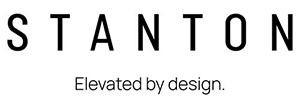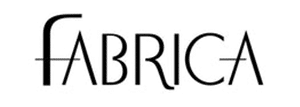How to Fix Laminate Flooring Bubbles and Prevent Future Damage

Laminate floor bubbling is a common issue that stems from either excess moisture or improper installation, and addressing it requires both careful attention and the right approach. When air gets trapped beneath the surface due to swelling from water exposure, small pockets can form that lift the floor and create visible bubbles. Over time, these imperfections worsen if left untreated, eventually leading to warping that compromises the integrity and appearance of the entire flooring system.
Fixing minor bubbles can often be managed by applying targeted heat with a hair dryer to soften the area, followed by gentle pressure to flatten the surface. However, when swelling has caused larger pockets or extended damage, the only effective solution is to remove the affected planks and install matching replacements. This process demands precise actions to avoid damaging the surrounding boards and to ensure a seamless result. Using proper tools and knowing where to start are crucial, especially when replacing multiple sections.
Humidity control plays a major role in preventing future problems. Fluctuations in air moisture can lead to swelling in laminate materials, especially if there’s no moisture barrier in place beneath the flooring. Monitoring the environment and responding quickly to water spills are key actions that safeguard against recurring issues.
Identifying the Root Cause of Laminate Bubbles
When dealing with a giant bubble in laminate flooring or a series of smaller raised spots, the real question isn’t just how to fix it; it’s why it happened in the first place. The answer almost always comes back to moisture. Whether from a hidden puddle, increased humidity, or a failure to seal the horizontal seam, water infiltrates the layers of the floor and breaks down its structure from the inside out. Over weeks, a minor flaw can turn into visible damage, especially when pressure builds beneath the wear surface and lifts it from the underlying layers.
To fully understand the issue, every bit of detail matters. For example, bubbles near exterior doors may trace back to water tracking in from outside, while bubbling in the middle of a room could indicate moisture rising through the subfloor. Multiple tiny bubbles across a large area often point to humidity that wasn’t managed over time. These surface changes, whether subtle or severe, signal a deeper issue that requires a close inspection of your flooring’s surroundings and installation history.
Another common mistake that leads to bubbling is not allowing the flooring to acclimate before installation. If the planks were placed too soon, or if installers skipped proper expansion gaps, the stress caused by environmental changes can trigger a breakdown in the binder or even delaminate the colour layer from the rest of the board. In some cases, factory flaws also contribute to early failure, especially when the post-installation environment temperature, airflow, or moisture falls outside recommended ranges.
This page serves as a practical guide to evaluating your floor’s condition. Before jumping into repairs, step back and look at the pattern, the position, and the conditions that led to the bubble’s formation. It’s not always a quick fix, but a smart approach will prevent repeat problems. Even a single bit of ignored moisture or pressure buildup can turn a small concern into a structural issue.
Assessing the Extent of the Damage Before Repair
Before starting any repair on laminate flooring, it’s essential to assess the full extent of the damage with a methodical eye. Damage might look isolated at first, but issues like water damage often extend beyond the visible edge of a bubbled plank. Moisture can travel underneath the floor, collecting in hidden pockets where it quietly softens planks or destabilizes the subfloor. A proper evaluation gives you the knowledge needed to tackle not just the symptom, but the source of the problem.
Begin by examining both the center of the bubble and the surrounding area. Press gently on nearby boards—if they shift, feel spongy, or sound hollow, more extensive damage is likely. Watch for discoloration, swelling, or gaps between seams, especially where planks meet walls or doorways. Often, these signs take weeks to develop after a leak or spill, but they give crucial clues about how far the water has traveled. Also consider how air flow and poor ventilation might have contributed to lingering dampness.
Take accurate measurements of the affected sections and the surrounding floor to estimate how much material you’ll need for replacement. Record where the bubbles appear, which direction they formed in, and whether there are any nearby signs of excess moisture, like plumbing lines or entry points where rainwater might enter. The space between planks, especially around edges, also matters—tight seams with no expansion gap can worsen buckling over time.
This post-inspection phase is more than a routine step; it’s the foundation for a smart repair strategy. Skipping this evaluation leads to temporary solutions at best and recurring problems at worst. By documenting details and checking beyond what’s visible, you prepare for a repair that lasts—one that doesn’t just patch up damage but prevents it from coming back. A focused inspection ensures each action, from plank replacement to environmental control, fits into a repair plan that delivers durable, high-quality results.
Using Heat and Pressure to Flatten Minor Bubbles
Fixing small bubbles in laminate flooring with heat and pressure is a quick solution when the damage hasn’t spread or lifted the surface too far. This method works best when you’re sure the issue isn’t from ongoing water pipe leaks or other sources of water under the floor. When bubbles come from minor expansion caused by trapped air or brief exposure to spilled water, heat can reactivate the adhesive and allow the plank to settle back into place.
Start by identifying the type of bubble you’re working with. If it’s centered away from edges along the seam and shows no signs of moisture or water damage, then it’s a good candidate for heat repair. A soft cloth placed over the spot acts as a barrier while applying medium heat using a hair dryer. Keeping the device 6 to 8 inches away prevents overheating and protects the colour layer beneath the wear surface.
Once the adhesive warms up, pressing down firmly with a heavy, flat object helps reseal the plank. Time is crucial; keeping pressure for one to two minutes allows the plank to cool in a flat position. If done correctly, this technique can save time and materials. But results vary depending on the type of glue used during manufacturing, the quality of the laminate flooring, and how long the bubble has been there.
It’s important to evaluate the situation before trying this method. For bubbles caused by moisture underneath, like from a hidden pipe issue or frequent spills, the damage might return if the underlying problem isn’t fixed. In that case, you’d need to replace damaged planks with identical planks and eliminate the moisture source before it spreads. Taking the time to inspect the full floor and post signs of earlier post damage helps ensure the repair doesn’t just look good, it lasts.
Replacing Damaged Planks for Long-Term Solutions
When laminate flooring develops bubbles that can’t be repaired with heat and pressure, replacing the damaged planks is the most reliable solution. This approach restores both appearance and structural integrity, especially when the cause is water damage or trapped air beneath the surface. Proper replacement ensures the problem doesn’t return and that the floor continues to function as a moisture-resistant, seamless system.
Repairs begin at the wall nearest the affected area, making it easier to unlock the floating floor panels without disturbing the entire layout. With a pry bar or a specialized laminate removal tool, each plank is carefully lifted, protecting the underlayment from scratches or tears. It’s essential to find replacement planks that match the original floor’s texture, finish, and locking system exactly; variations in width, gloss, or pattern will stand out if not properly matched.
Installation follows the manufacturer’s locking system to ensure each new plank connects securely with its neighbors. The goal is to create a flat, gap-free surface that mirrors the original design. Once complete, the new section should align perfectly with the rest of the floor, maintaining its visual continuity and eliminating any weak points that might allow moisture intrusion or air pockets.
Beyond cosmetic recovery, this replacement process reinforces the floor’s durability. By removing compromised areas and installing fresh material with the correct tools and underlayment protection, you’re not just patching a problem; you’re building a resilient, unified flooring surface. When done properly, this kind of repair not only restores your laminate but also prevents future air intrusion and water damage, protecting your investment for years to come.
Preventing Future Bubbling with Proper Installation and Care
Preventing bubbling in laminate flooring begins long before the first plank is laid. Good installation practices and consistent maintenance work together to protect against the root causes of damage, especially moisture and improper spacing. Using a moisture barrier beneath the flooring plays a critical role by blocking vapor and ground moisture from rising into the planks. This step is essential in any environment prone to humidity changes or subfloor dampness.
One of the most overlooked yet essential actions is allowing laminate materials to adjust to the room for 48 to 72 hours before installation. This acclimation period helps reduce the risk of future expansion or contraction, which can create stress on the floor and lead to bubbling. In addition, keeping indoor humidity control within a stable range of 35% to 65% prevents the planks from absorbing excess moisture or drying out too quickly. Tools like dehumidifiers or humidifiers can help maintain this balance throughout the year.
Leaving expansion gaps about 1/4 to 3/8 inch between the floor and stationary structures like walls, cabinetry, or columns gives the laminate room to expand naturally. Ignoring this detail often results in pressure that lifts and warps planks, making bubbling inevitable. The underlayment must also match the manufacturer’s recommendations, supporting the locking system and contributing to sound and moisture control.
Daily upkeep is just as vital as the initial setup. Wipe up spills immediately and avoid saturating the surface with water during cleaning. Excess moisture, even from a mop, can infiltrate the plank seams and trigger bubbling beneath the surface.
Professional installation combined with these preventative strategies helps preserve the floor’s structure and appearance. When each element of humidity control, expansion spacing, proper underlayment, and moisture vigilance is in place, you create a stable, long-lasting foundation that resists bubbling and extends the life of your laminate flooring.


















